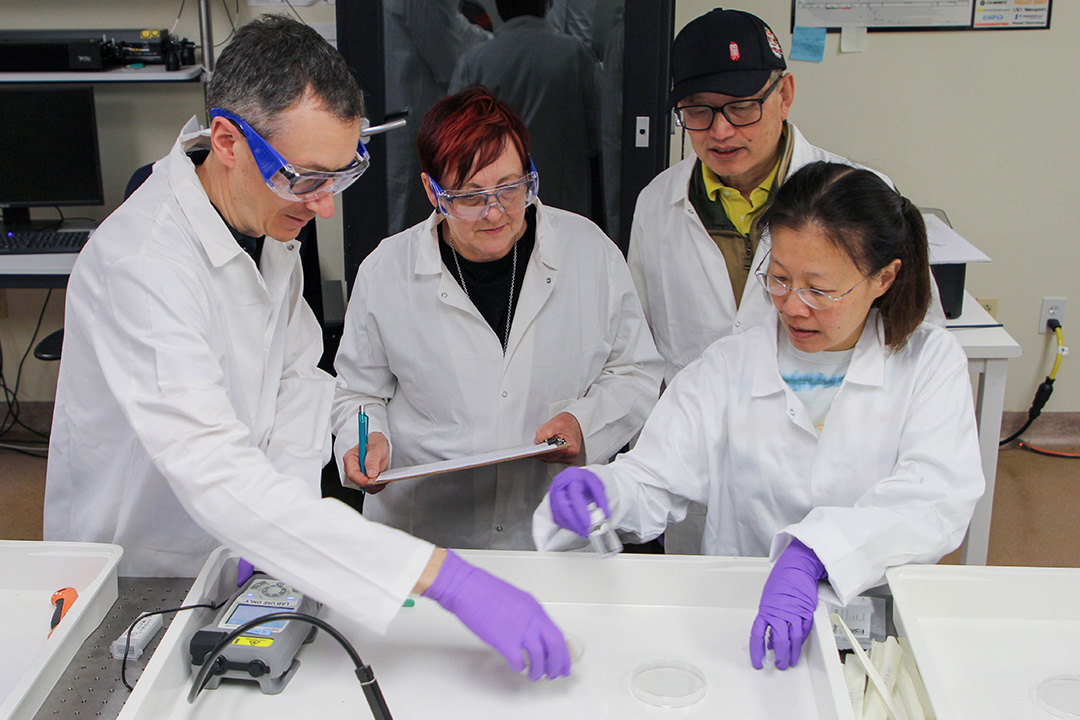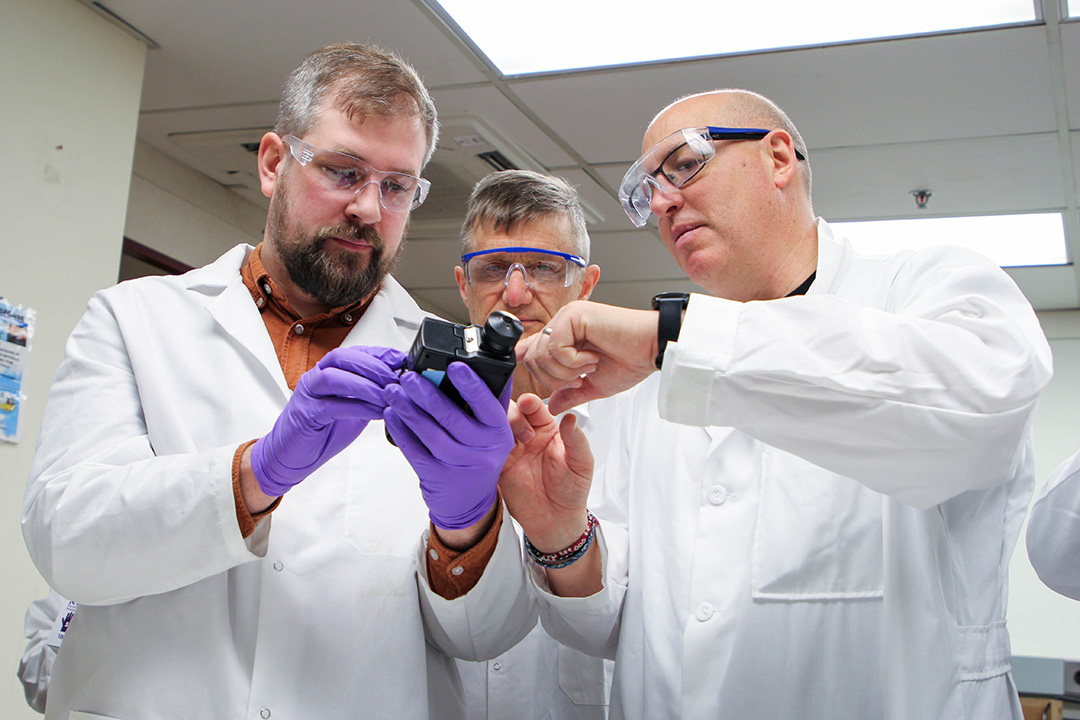// NEWS RELEASE
NATO Researchers Hold Lab Field Trial with DEVCOM CBC Scientists
CCDC Chemical Biological Center Public Affairs | April 2nd, 2024
NATO Researchers Hold Lab Field Trial with DEVCOM CBC Scientists
DEVCOM CBC Public AffairsApril 2nd, 2024

Members of a NATO Research Task Group from six countries completed their four-year collaborative research effort on field sensor enhancement with a laboratory demonstration at Aberdeen Proving Ground, Maryland March 7. (U.S. Army photo by Ellie White)
Aberdeen Proving Ground, MD – DEVCOM CBC scientists completed four years of collaborative research with NATO partner nations on developing a better field sensor with a laboratory demonstration at its Aberdeen Proving Ground research campus in Maryland on March 7.
Operating under the NATO Sensors and Electronics Technology (SET) Panel, NATO-SET-292 “Enhanced Raman Spectroscopy for Defense Applications,” the effort resulted in the demonstration of a lightweight, fieldable modification that increases the sensitivity of handheld sensors by a thousand-fold for detecting chemical warfare agents, their breakdown products, and illicit drugs such as fentanyl.
The laboratory demonstration showed that this process of amplification can be used by warfighters in the field without increasing their load burden.
The handheld sensors used for the study are commercially available and commonly used portable Raman spectrometers that could be augmented with surface-enhanced Raman spectroscopy substrates, enabling a jump from only being able to identify bulk materials to identifying traces so small that they cannot even be seen with the naked eye.
The breakthrough came about when the international team of researchers determined that a very thin coating of either gold or silver on a paper tab smaller than a human thumb will amplify the light signature that the Raman sensor receives while shining a light on a substance.
“The sensor shines a light on a sample and that excites the molecules so that they rise to a higher energy state,” explained Dr. Jason Guicheteau, DEVCOM CBC research chemist and the vice chair of the NATO SET Panel. “The molecule then returns to its original state and emits photons of different wavelengths. The sensor reads that photon emission and can identify the substance using a library of known substances and their optical signatures in the sensor’s software.”

By combining that effect with gold or silver nanoparticles, the target molecule under interrogation experiences more than a thousand-fold increase in signal, thus allowing higher sensitivity of a previously unobservable threat. The increased signal is due to the concentration of the optical field near the nanoparticle surfaces by a process known as plasmonic resonance.
The success of this international research effort was possible because of the spirit of the scientists from USA, Canada, France, Germany, Poland and Sweden who came together to form the NATO Research Task Group. “The world got hit with COVID when we first started in 2020,” said Dr. Erik Emmons, a DEVCOM CBC research physicist and co-chair of the team. “But that didn’t stop us. Through video conference calls and experimental work at the different countries’ labs we were able to keep the research going as a full collaboration.”
“Everybody involved had the same motivation,” added Dr. Ashish Tripathi, a DEVCOM CBC research physical scientist and co-chair of the team. “Everybody wanted to make a better sensor for the warfighters throughout the NATO coalition, and each of them brought their own special expertise to the table.”
Dr. Bartlomiej Jankiewicz from Poland’s Military University of Technology agreed. “I was happy with the collaborative way we worked. We developed a technology we can use. It was also an excellent learning experience for us.”
The Research Task Group will continue working together to write up their findings and deliver them to NATO as well as explore future opportunities to bridge the gap between bulk and trace level detection through the augmentation of portable detection technologies.
The U.S. Army Combat Capabilities Development Command (DEVCOM) leads in the discovery, development and delivery of technology-based capabilities to enable Soldiers to win our nation’s wars and come home safely. DEVCOM is a major subordinate command of the U.S. Army Futures Command. The DEVCOM Chemical Biological Center is the Army’s principal research and development center for chemical and biological defense technology, engineering and field operations. The DEVCOM Chemical Biological Center is headquartered at Aberdeen Proving Ground, Maryland.
